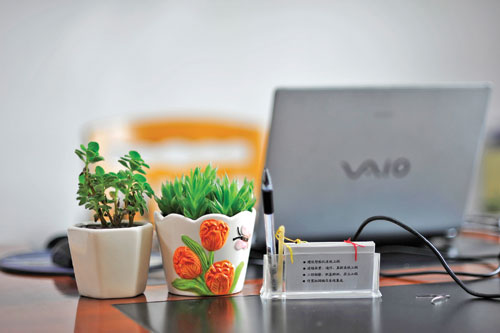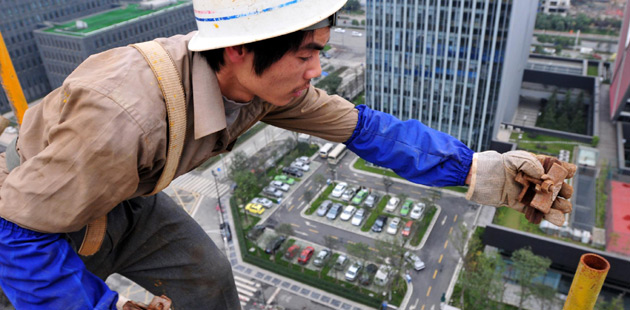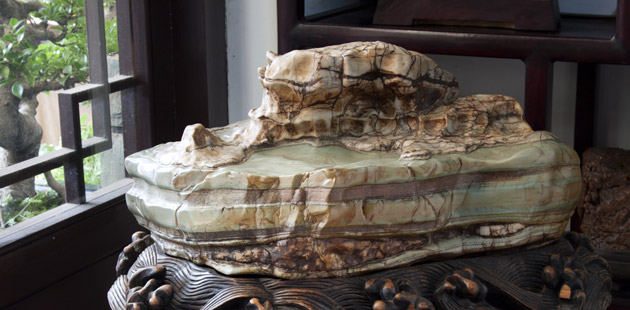From concept to action: Painting the office green
Updated: 2011-11-28 10:18
By Wang Hongyi (China Daily)
|
|||||||||||
SHANGHAI - People may try all sorts of ways to save money at home but it's a different picture at the office: endless printing, computers on 24/7, paper cups casually disposed of, heating, cooling air-conditioning: They all involve unnecessary waste.
|
 |
|
Going green at the office is increasingly being seen as the most sensible way forward. It is something more and more people and companies are now doing.[Photo/China Daily] |
But it is good to see that some companies have already started to bring about change.
"Looking into every detail, we have been exploring ways to create a green office and reduce energy waste," said Zhang Xiaoyan, director of the corporate affairs department of the Chinese sports-clothing brand Li-Ning Co Ltd.
As early as 2009, the company, inspired by Earth Hour, began switching off the lights in its three buildings from 12:00 am to 13:00 pm every day. Nearly 8,000 lights are turned off, saving 336 kilowatts an hour.
"If this was done for 60 percent of annual work days, 720,000 kW/h will be saved, which is equal to reducing carbom emissions by 565.2 tons," Zhang said.
The company promotes the use of recycled paper and prints on both sides at its offices. Employees are also encouraged to take their own cup to work. The purchase of paper and paper cups fell dramatically.
Meanwhile, the company established a specific area for employees who work overtime. By concentrating them in one place rather than scattering them all over means air conditioning units elsewhere can be turned off, saving energy.
"Going green at the office is increasingly the obvious way forward. It is something more and more people and companies are doing. Meanwhile, more office products and solutions will be developed that reduce greenhouse gas emissions by conserving energy," said Peng Ge, manager of the products marketing department at Toshiba-Tec Co.
"The office products and solutions industry has developed dramatically over the past two decades. It is closely related to the fast development of information, telecommunications and software technology," said Evan Sha, deputy general manager of Messe Frankfurt (Shanghai) Co Ltd.
"We have found that in the most active Asian markets, efficient and economic office work have been given a higher priority by company managers and government bodies," he said.
This year, Paperworld China, otherwise known as the China International Stationery & Office Supplies Exhibition, featured a showcase for "extraordinary" stationery to highlight green and creative office products for the first time.
The organizer also held a green initiative conference in September to discuss the eco-design of stationery and product and packaging. Participants attending this event learned how to "green" their products to meet customers' demand for environmentally friendly stationery and office supplies.
"This is an international exchange platform bringing the latest news from the whole industry, advanced office work solutions and also promotes the green office of the future," Sha said.
In the field of office work, integrated electronic (intelligent automation) office equipment has undoubtedly brought more optimized performance and also adapted to the trend of environmental protection.
A survey by the magazine IT Time found that in most companies the cost of document control (information and data) accounts for about 6 percent of the company's annual revenue, putting it in the top 10 of companies internal expenses. Also, it found the cost of document output by a printer is 50 percent higher than using multi-function equipment.
Intelligent office equipment that integrates the function of printer, duplicator, scanner and facsimile machine has increasingly become the mainstream product for business use. Data by the research company IDC shows that in the first half of 2010 the sales ratio between multi-function printers and single-function printers fell to 1:1.3 from 1:18 in 2002.
The electronic office will mean not only a revision of existing office work procedures but also the saving of paper. It's estimated that one-third of paper in the country was used in office work. If every business in the country adopted electronic office procedures, at least 1 million tons of paper will be saved every year. That would also reduce the emission of more than 10 million tons of greenhouse gases both directly and indirectly.
People spend one third of their time every workday in the office. As such, providing a green office environment is an important issue for companies' managers. Office furniture manufacturers continue to explore and develop green products, such as the use of green materials and environmentally friendly designs.
"As good corporate citizens, companies should behave in a socially responsible way. A focus on sustainable development has become the strategic choice for many companies because of a rise in expectations from consumers," said Zhang Xiaoyan.
According to a report conducted by the public relations firm Ruderfinn and Tsinghua University in 2010, consumers' concerns about corporate social responsibility have increased to 64 percent from a previous 55 percent.
Moreover, buying behavior is also affected by corporate social responsibility. For example, in the auto industry, about 77 percent of customers take the social responsibility of companies into consideration when choosing a car, compared with a previous 68 percent.








